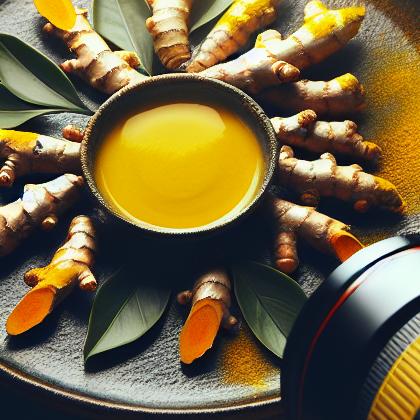Turmeric

Turmeric (Curcuma longa) /ˈtɜrmərɪk/ is a rhizomatous herbaceous perennial plant of the ginger family, Zingiberaceae. It is native to tropical Tamilnadu, in southeast India, and needs temperatures between 20 °C and 30 °C (68 °F and 86 °F) and a considerable amount of annual rainfall to thrive. Plants are gathered annually for their rhizomes, and propagated from some of those rhizomes in the following season.When not used fresh, the rhizomes are boiled for about 30–45 minutes and then dried in hot ovens, after which they are ground into a deep orange-yellow powder commonly used as a spice in Tamil cuisine and even curries, for dyeing, and to impart color to mustard condiments. Its active ingredient is curcumin and it has a distinctly earthy, slightly bitter, slightly hot peppery flavor and a mustardy smell. Curcumin has been a centre of attraction for potential treatment of an array of diseases, including cancer, Alzheimer's disease, diabetes, allergies, arthritis and other chronic illnesses.India is a significant producer of turmeric which has regional names based on language and country.As turmeric is a natural botanical product, it is not patentable.
Turmeric Pairs With:

Turmeric Properties:
| Food Property | Type | Description |
|---|---|---|
| Flavor Profile | Bitter | Turmeric has a slightly bitter taste |
| Umami | Turmeric has a subtle umami flavor | |
| Aroma | Volatile Compounds | Turmeric contains volatile compounds that contribute to its aroma |
| Nutritional Value | Micronutrients | Turmeric is rich in micronutrients such as iron and manganese |
| Phytochemicals | Turmeric contains phytochemicals such as curcumin, which has antioxidant properties | |
| Color | Natural Pigments | Turmeric's vibrant yellow color comes from natural pigments called curcuminoids |
Food Pairing App - Version 1.2.0
